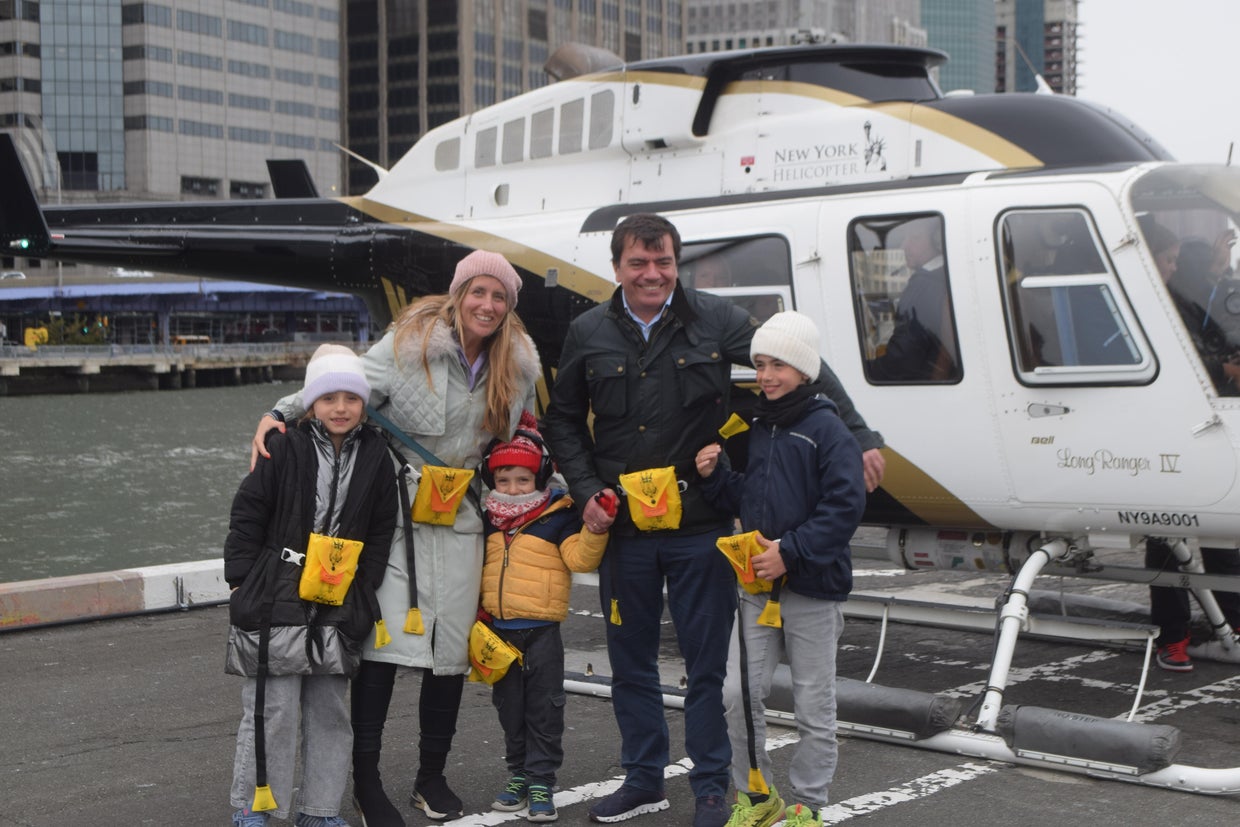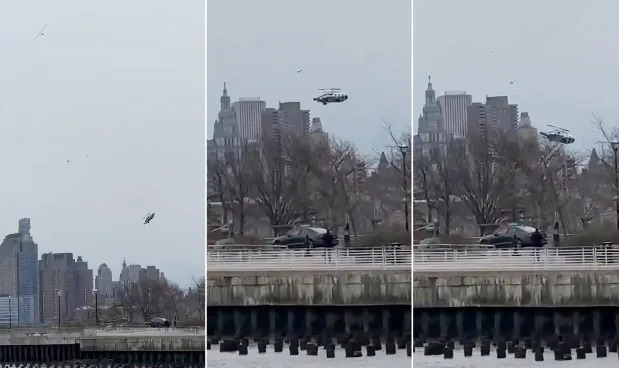On April 10, 2025, a sightseeing helicopter crashed into the Hudson River during a routine aerial tour of New York City, resulting in the deaths of six people. The incident has sparked national concern over helicopter tour safety, operator standards, and regulatory enforcement. Federal agencies, including the National Transportation Safety Board (NTSB) and the Federal Aviation Administration (FAA), are actively investigating the cause and broader implications of the tragedy.

How the Crash Unfolded
The helicopter departed from a Manhattan heliport at approximately 3:00 p.m. on a scheduled sightseeing flight. Around 15 minutes later, witnesses along the Hudson River saw the aircraft lose its main rotor midair. The helicopter reportedly flipped before crashing upside-down into the river near Jersey City’s Pier 40.
Emergency responders, including the FDNY and New Jersey water rescue teams, arrived within minutes. All six people onboard were recovered. Four were declared dead at the scene, while two others later died in the hospital despite receiving immediate medical attention.
Victims and Operator Involved
Authorities identified the passengers as members of a Spanish family, including two children. The pilot, a 36-year-old former U.S. Navy aviator, was also among the victims. The helicopter was operated by New York Helicopter Tours, a company known for running aerial sightseeing experiences over Manhattan. Following the crash, the company voluntarily suspended operations. Federal regulators also launched a full compliance review of the company’s licensing, maintenance logs, and pilot training procedures.
What Investigators Know So Far
The NTSB took over the investigation on April 11, dispatching a specialized team to recover wreckage, review technical documentation, and interview witnesses. Investigators confirmed that the helicopter was not equipped with a flight-data recorder or cockpit voice recorder—devices that, while not legally required for this type of aircraft, are considered vital for understanding the sequence of events in crashes.
FAA officials are also analyzing the operator’s safety history, aircraft maintenance practices, and the pilot’s qualifications and flight logs. A public safety hearing is scheduled for April 22, 2025, during which experts and agency officials will discuss emerging patterns in helicopter tour safety.

Safety Implications and Industry Review
This accident has brought renewed scrutiny to the air tourism industry. Federal aviation authorities are facing pressure to tighten regulations, especially concerning:
-
The use of flight-data and cockpit voice recorders in all commercial aircraft
-
Routine inspection standards for tourism helicopters
-
Pilot training and emergency preparedness
-
Routing permissions for tours over densely populated areas
The FAA has already announced a full policy review and is coordinating with the NTSB to explore potential mandates for enhanced onboard safety systems.
Public Response and Local Authorities
New York City Mayor Eric Adams offered condolences and thanked first responders for their swift coordination. A recovery crane was used to lift the wreckage from the Hudson River. Local communities gathered at the waterfront for a moment of silence, with flowers placed near the scene as a sign of remembrance.
The tragedy has also prompted calls from both lawmakers and citizen groups for stricter oversight of helicopter tour companies, particularly in urban areas like New York City where air traffic is dense and risk factors are heightened.

Helicopter Safety History in Urban Environments
While rare, helicopter crashes in urban environments have historically led to serious consequences and major safety reforms. This incident marks one of the deadliest helicopter crashes in the United States in recent years. Experts suggest the combination of high passenger volume, limited regulation on small aircraft, and variable weather conditions around rivers and tall buildings all increase risk.
The NTSB has recommended that all tour operators adopt stricter voluntary safety protocols, including optional flight-data recorders, better passenger restraint systems, and improved emergency training for both staff and customers.
The Next Steps in the Investigation
The crash investigation is proceeding through multiple phases. First, NTSB teams are recovering and reconstructing aircraft components, including the main rotor and transmission system. Simultaneously, the FAA is reviewing the operator’s prior inspection reports, maintenance logs, and safety audits.
By April 22, preliminary findings are expected to be presented at the NTSB’s public hearing, which will include expert testimony and recommendations for safety policy changes. A full report, including the official determination of probable cause, is expected within 12 to 18 months.
Meanwhile, the FAA is likely to issue interim safety directives for tour helicopter operators, particularly those operating in major metropolitan areas.

What This Means for Tour Passengers
Tourists considering helicopter flights should carefully research their chosen operators. Experts recommend booking with companies that:
-
Use aircraft equipped with optional flight-data and cockpit voice recorders
-
Clearly communicate pre-flight safety procedures
-
Maintain an up-to-date inspection and maintenance history
-
Have pilots with substantial flight hours and specific urban-area experience
Passengers can also ask about emergency flotation devices and rescue protocols before boarding.
Conclusion
The helicopter crash on April 10, 2025, in the Hudson River was a tragic reminder of the risks involved in urban air tourism. The loss of six lives, including two children, has led to a national conversation on aviation safety. While the investigation is ongoing, early indicators suggest that a combination of mechanical failure and a lack of onboard safety equipment may have played a role.
With oversight by the NTSB and FAA, new safety regulations are expected to emerge, reshaping how helicopter tour companies operate in the United States. For the aviation industry, this moment represents a critical juncture for reform, transparency, and renewed commitment to passenger safety.
Sources
https://www.reuters.com/world/us/helicopter-fatal-new-york-crash-lacked-flight-recorders-ntsb-says-2025-04-13
https://www.westernmassnews.com/2025/04/11/bodies-mangled-debris-helicopter-crash-that-killed-6-pulled-hudson-river-nyc-mayor-says
https://abcnews.go.com/US/helicopter-rotor-retrieved-hudson-river-days-after-deadly/story?id=120798812
https://apnews.com/article/new-york-helicopter-crash-e0368ea529659ee1513d92dcbf05a28d
https://people.com/dc-plane-crash-questions-answered-investigation-explained-8787158
